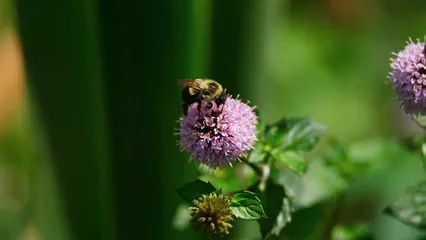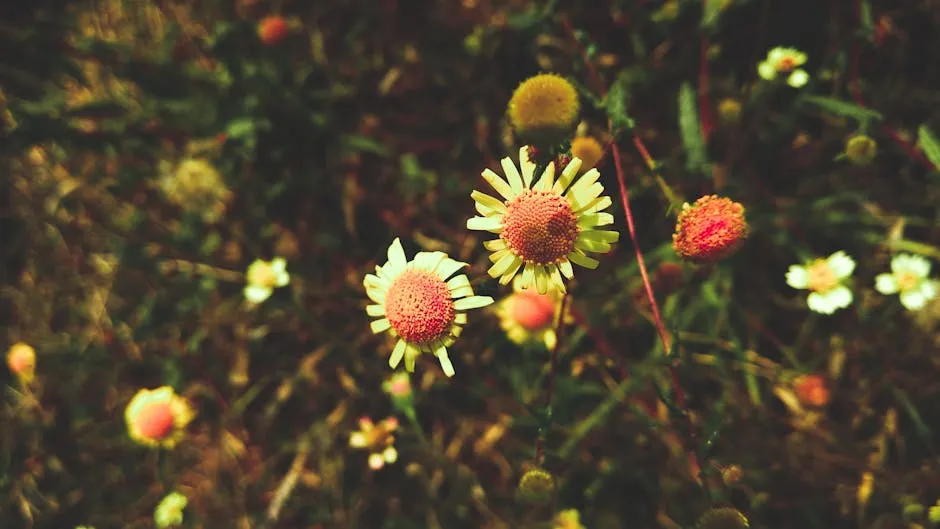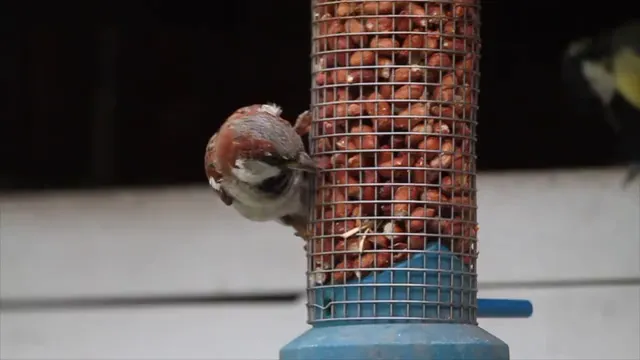

Best Native Plants for Attracting Local Wildlife
Introduction
Native plants are the unsung heroes of local ecosystems. They provide essential food, shelter, and habitat for a variety of wildlife, making them indispensable for our feathered friends and buzzing buddies. Imagine a garden where butterflies flutter, birds sing, and bees buzz happily from flower to flower. Sounds delightful, right? This enchanting scene can be your backyard reality. By choosing native plants, you’re not just beautifying your space; you’re creating a wildlife-friendly oasis. These plants have evolved alongside local species, ensuring that the food they provide is just what the critters need. Your garden can become a sanctuary that supports ecological health while offering you endless enjoyment. So, roll up your sleeves, grab your gardening gloves, and let’s dig into the world of native plants that attract local wildlife!Why Native Plants Are Essential for Wildlife
When it comes to supporting local wildlife, native plants reign supreme. They have a unique symbiotic relationship with local creatures, providing vital resources. Research by entomologist Doug Tallamy shows that native plants are crucial for maintaining biodiversity. In fact, studies reveal that native plant species support up to 90% of the insects that birds rely on. Birds need insects to feed their young, making native plants a key player in the food chain. Consider the majestic oak tree. It can support over 530 species of butterfly and moth caterpillars, while non-native options might attract just one. This disparity highlights the importance of choosing plants that are native to your region. Furthermore, these plants have adapted to local climates. They require less water and maintenance, making them a sustainable choice for environmentally conscious gardeners. Using native plants means less reliance on pesticides, as these species are often more resistant to local pests. Imagine having a garden that thrives with minimal intervention—sounds like a dream, right? By fostering a healthy ecosystem filled with native flora, you’re not only attracting wildlife but also promoting a balanced environment. So, let’s get planting those native beauties!
Benefits of Native Plants
Biodiversity
Native plants are the unsung champions of biodiversity. They provide essential support for a variety of birds, insects, and other wildlife. Unlike their non-native counterparts, native plants have evolved alongside local fauna, creating a harmonious ecosystem that thrives on mutual dependency. This natural synergy fosters a rich tapestry of life, ensuring that everything from bees to butterflies finds a home. For instance, a single oak tree can support over 530 species of caterpillars! Who knew a tree could throw such an exclusive party?Food Sources
When it comes to food, native plants serve up a delightful menu. They offer nectar, seeds, and fruits that local wildlife crave. Think of purple coneflowers, which attract butterflies with their sweet nectar, or black-eyed Susans, which provide seeds for hungry birds. By planting a variety of native species, you can create a buffet for local wildlife year-round. Just imagine, your garden could be the hottest dining spot in town for critters of all kinds!
Reduced Pesticide Use
One of the best-kept secrets about native plants is their resilience against pests. These plants have adapted to local environmental conditions, making them less susceptible to diseases and infestations. This means you can say goodbye to harsh chemicals and pesticides. Instead of worrying about pesky bugs ruining your garden party, you can enjoy a thriving ecosystem that takes care of itself. Less fuss, more fun—sounds like a win-win, right?Recommended Native Plants by Region
Northeast
In the Northeast, plants like Purple Coneflower and Black-eyed Susan are must-haves. They attract pollinators and provide seeds for birds. Milkweed is another star, essential for monarch caterpillars. Your garden will be buzzing with activity! Purple Coneflower (Echinacea purpurea) is a magnet for butterflies and bees. Its vibrant petals not only brighten your garden but also offer nectar that pollinators crave. Plus, once the blooms fade, the seed heads become a tasty treat for goldfinches. Talk about a two-for-one special! You can find some milkweed seeds to support those beautiful monarchs. Black-eyed Susan (Rudbeckia hirta) is another crowd-pleaser. This cheerful flower adds a splash of yellow to any landscape. It attracts various pollinators and, much like its coneflower cousin, its seeds serve as a delightful snack for birds in the fall. Who knew a flower could double as a bird buffet? Milkweed (Asclepias spp.) deserves a special mention too! This plant is the sole host for monarch caterpillars. By planting milkweed, you’re not just beautifying your yard; you’re also supporting the majestic monarchs on their incredible journey. Plant these three, and your garden will be buzzing with life!
Southeast
In the Southeast, make room for the dazzling Cardinal Flower (Lobelia cardinalis) and the wonderful Trumpet Honeysuckle (Lonicera sempervirens). Cardinal Flower is a true showstopper with its striking red blooms. Hummingbirds can’t resist its sweet nectar, making your garden a hotspot for these speedy little birds. Watching them hover around is like having your own live nature show! You can enhance this experience with a hummingbird feeder for extra attraction! Pair it with Trumpet Honeysuckle, and you’ll create an irresistible haven for butterflies and hummingbirds alike. The tubular flowers are perfect for these winged wonders, and the fruit is a delicious treat for many bird species. With these two, your garden will be alive with fluttering and chirping.
Midwest
Moving to the Midwest, consider adding Wild Bergamot (Monarda fistulosa) and Swamp Milkweed (Asclepias incarnata) to your wildlife-friendly garden. Wild Bergamot is not just a pretty face; its fragrant flowers attract a variety of pollinators, including bees and butterflies. The plant’s leaves can even be brewed into a delightful tea! It’s a win for both you and the buzzing buddies. If you’re looking for a great start, consider a seed starter kit to grow these beauties. Swamp Milkweed is another essential, especially for monarch butterflies. It provides the perfect environment for their larvae, ensuring that future generations will flutter through your garden. Plus, it’s a great source of nectar for other pollinators. With these two, your garden will be a vibrant sanctuary for both pollinators and birds, enriching the local ecosystem.
Southwest
In the arid Southwest, native plants like Desert Marigold and Agave shine brightly. The Desert Marigold, with its cheerful yellow flowers, thrives in dry, sandy soils. Its deep roots tap into moisture, making it a perennial favorite for pollinators. This plant is not just a pretty face; it also provides seeds that birds enjoy. You can find some desert marigold seeds to get started! Agave, on the other hand, is a tough cookie. This succulent boasts thick, fleshy leaves that store water, allowing it to flourish under the blazing sun. The tall flower stalks attract hummingbirds and bees, ensuring a vibrant wildlife presence. Together, these plants create a haven for local fauna in an otherwise challenging environment.
Northwest
In the lush Northwest, Oregon Grape and Red Flowering Currant take center stage. Oregon Grape, with its holly-like leaves and bright yellow flowers, is a powerhouse in the forest ecosystem. Its berries, though tart for humans, are a favorite for birds and other wildlife. Plus, it’s a fantastic ground cover that helps prevent soil erosion. If you’re interested in learning more, check out a native plant guide book for more insights! Red Flowering Currant is equally impressive. Its clusters of pink flowers are irresistible to hummingbirds and butterflies. This plant thrives in sunny spots, providing nectar during spring when many other plants are still waking up. Both these natives contribute to the rich tapestry of life in the Northwest, supporting a diverse range of species in forest and coastal ecosystems.
Creating a Wildlife-Friendly Garden
Designing a wildlife-friendly garden is like throwing a backyard party for nature! To ensure your garden becomes a haven for diverse wildlife, follow these tips: Diversity is Key: Mix it up! Incorporate a variety of native plants, including flowering plants, shrubs, and trees. This diversity attracts different species, ensuring your garden is buzzing with life. Seasonal Blooms: Choose plants that flower at various times. This guarantees a continuous food supply for pollinators and other wildlife throughout the growing season. Imagine butterflies fluttering around in spring and hummingbirds sipping nectar in late summer! Water Sources: All creatures need hydration. Add birdbaths, small ponds, or even a simple catch basin for rain. Birds and insects will flock to your garden for a refreshing drink. Shelter and Nesting Sites: Provide hiding spots and nesting areas. Dense shrubs and ground cover offer perfect shelter for small mammals and nesting sites for birds. Consider leaving a pile of leaves or a small log to create cozy nooks. Avoid Pesticides: Harmful chemicals can deter wildlife and disrupt the delicate balance of your garden. Opt for natural pest control methods, like organic pest control spray. Your garden will thrive, and so will the critters that visit! Let it Be Wild: Don’t stress about perfection. Allow some areas to grow wild. This not only provides habitat but also encourages a variety of species to call your garden home. By incorporating these elements, you’ll create a vibrant and inviting environment for local wildlife. Not only will your garden flourish, but you’ll also enjoy the delightful company of birds, bees, and butterflies. So, roll up those sleeves and get planting—nature is waiting for your invitation!
Common Wildlife Visitors to Your Garden
Creating a wildlife-friendly garden is like opening the door to nature’s party! By populating your outdoor space with native plants, you attract a variety of delightful guests. Let’s take a closer look at the types of wildlife that will be flocking to your backyard bash.Birds
Birds are among the most common visitors. They come for the food and stay for the ambiance. Seed-producing plants like coneflowers and black-eyed Susans will keep them happy. For instance, goldfinches adore the seeds of purple coneflowers. Meanwhile, serviceberries and dogwoods provide delicious fruits that songbirds can’t resist. You may even spot beautiful hummingbirds flitting around cardinal flowers, eager to sip their sugary nectar. Plant a variety of native trees and shrubs, and you’ll create a buffet for feathered friends. Your garden could easily become the go-to spot for chirpy visitors looking for sustenance. Enhance this experience further by adding a bird feeder for extra attraction!
Pollinators
Next up, let’s talk about the buzzing brigade: pollinators! Bees, butterflies, and other insects are essential for a healthy garden. They help plants reproduce while indulging in the nectar and pollen from blooming beauties. Consider adding milkweed, which is the sole host plant for monarch caterpillars. This means you’ll not only attract monarch butterflies but also contribute to their population boost. Other pollinator favorites include wild bergamot seeds, which provide a feast for various bees and butterflies. When these colorful creatures visit, they add a touch of magic to your garden!
Other Wildlife
But wait, there’s more! Your garden will also attract small mammals and reptiles. Ground cover plants and dense shrubs create perfect hiding spots for critters like rabbits and chipmunks. They thrive in the shelter of native plants, making your garden a safe haven. Additionally, lizards and frogs may take up residence in your wildlife-friendly paradise. They help control insect populations, making them valuable allies in keeping your garden healthy. By planting native species, you’re not just inviting birds and butterflies; you’re creating a thriving ecosystem that supports a diverse range of wildlife. So, roll up your sleeves and get planting! Your garden can transform into a vibrant wildlife sanctuary, buzzing with activity and life. Enjoy the delightful company of all your new visitors!
By incorporating native plants in your garden, you’re not only enhancing its beauty but also attracting local wildlife. Best native plants for attracting local wildlife
Please let us know what you think about our content by leaving a comment down below!
Thank you for reading till here 🙂
All images from Pexels



